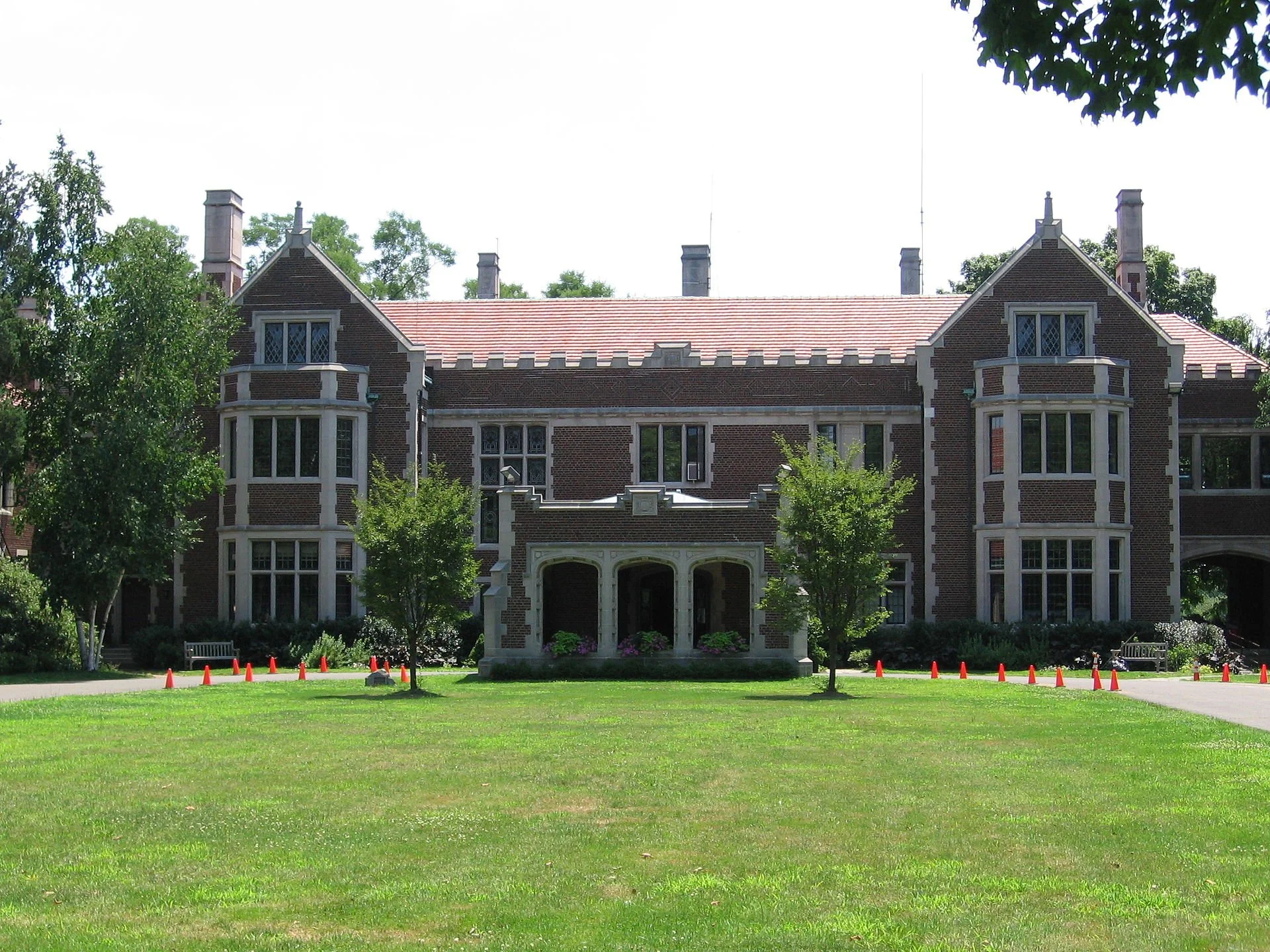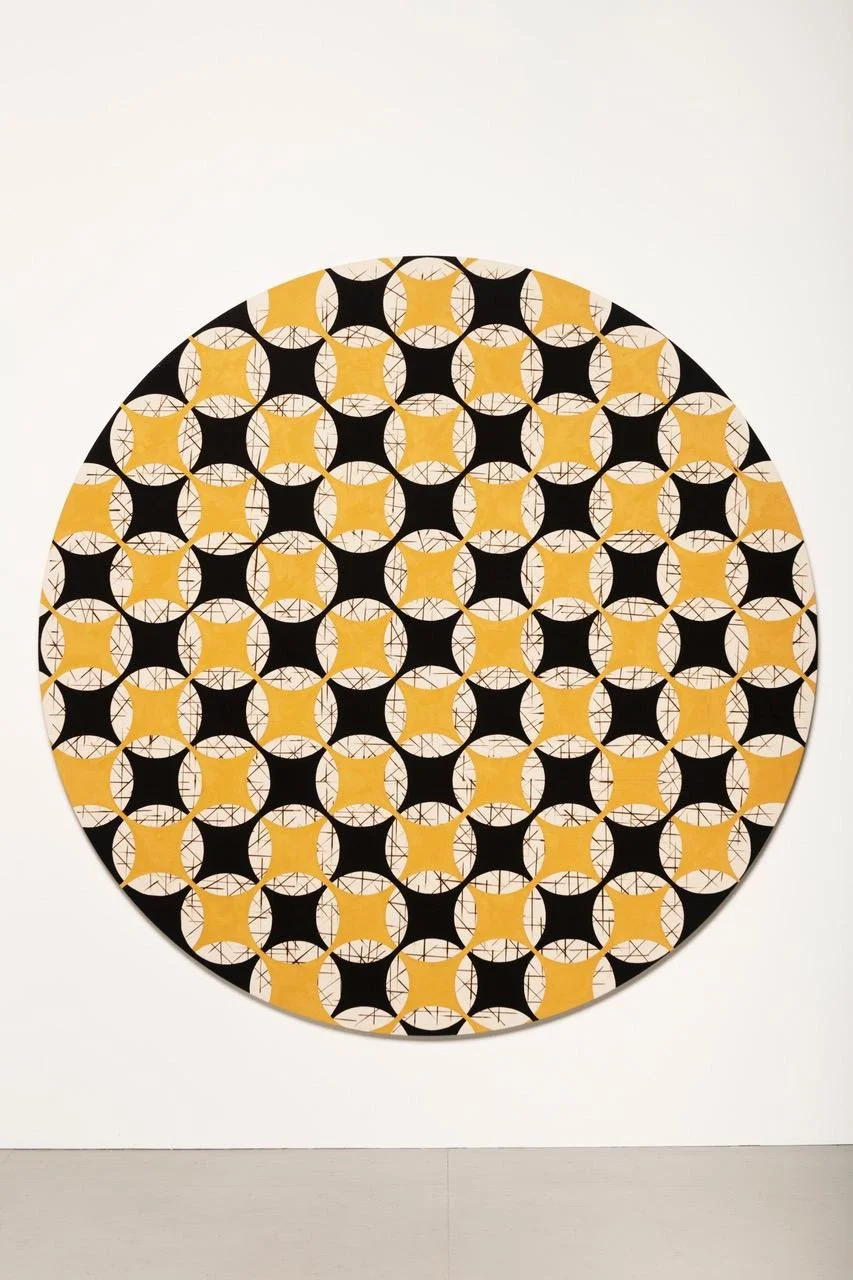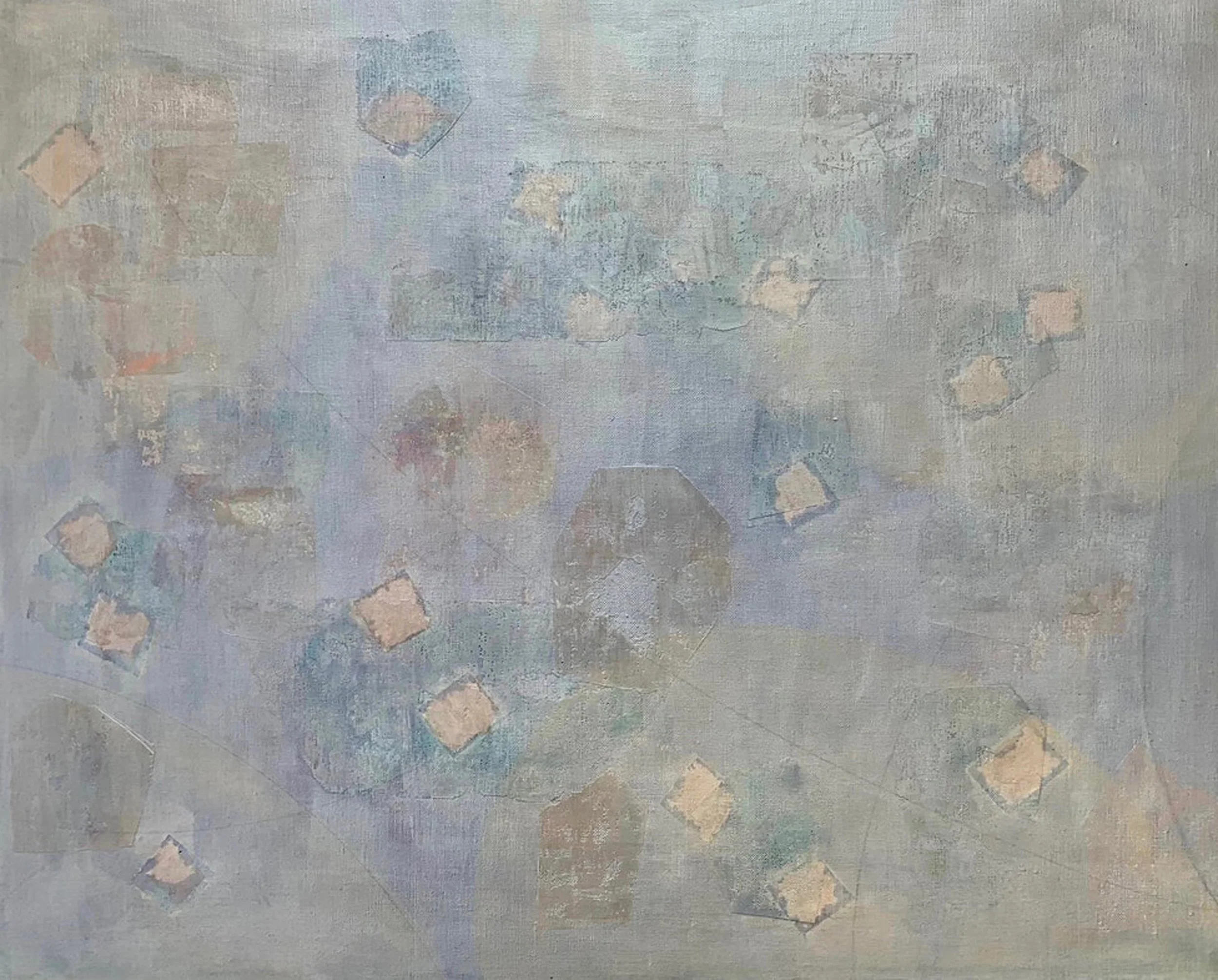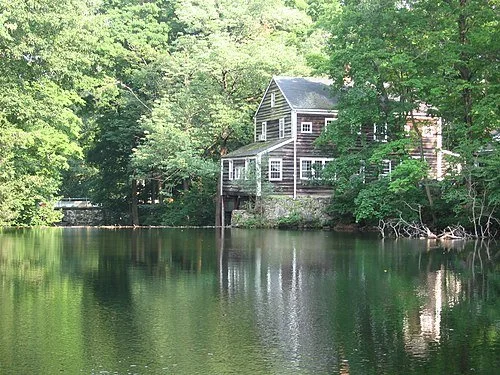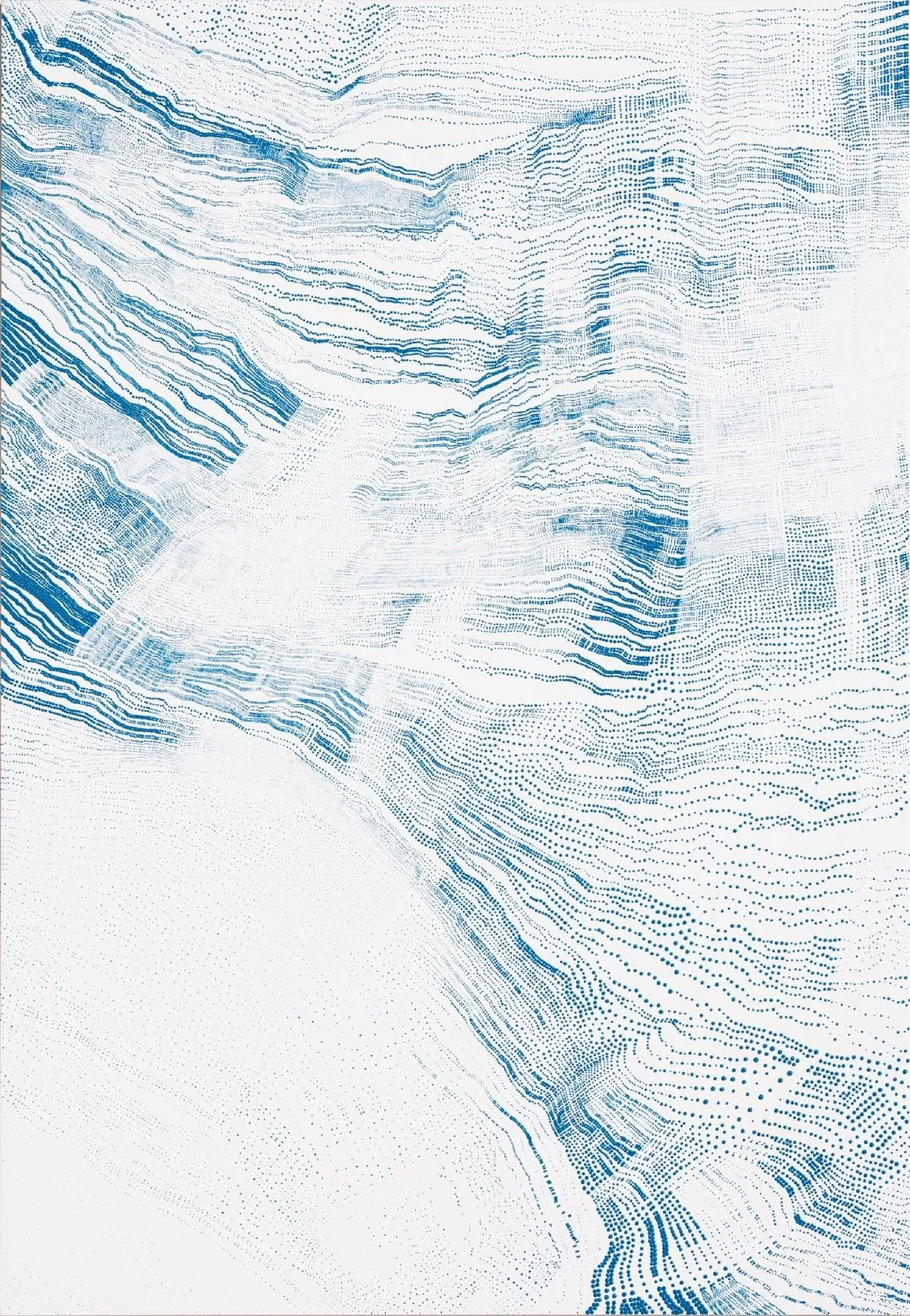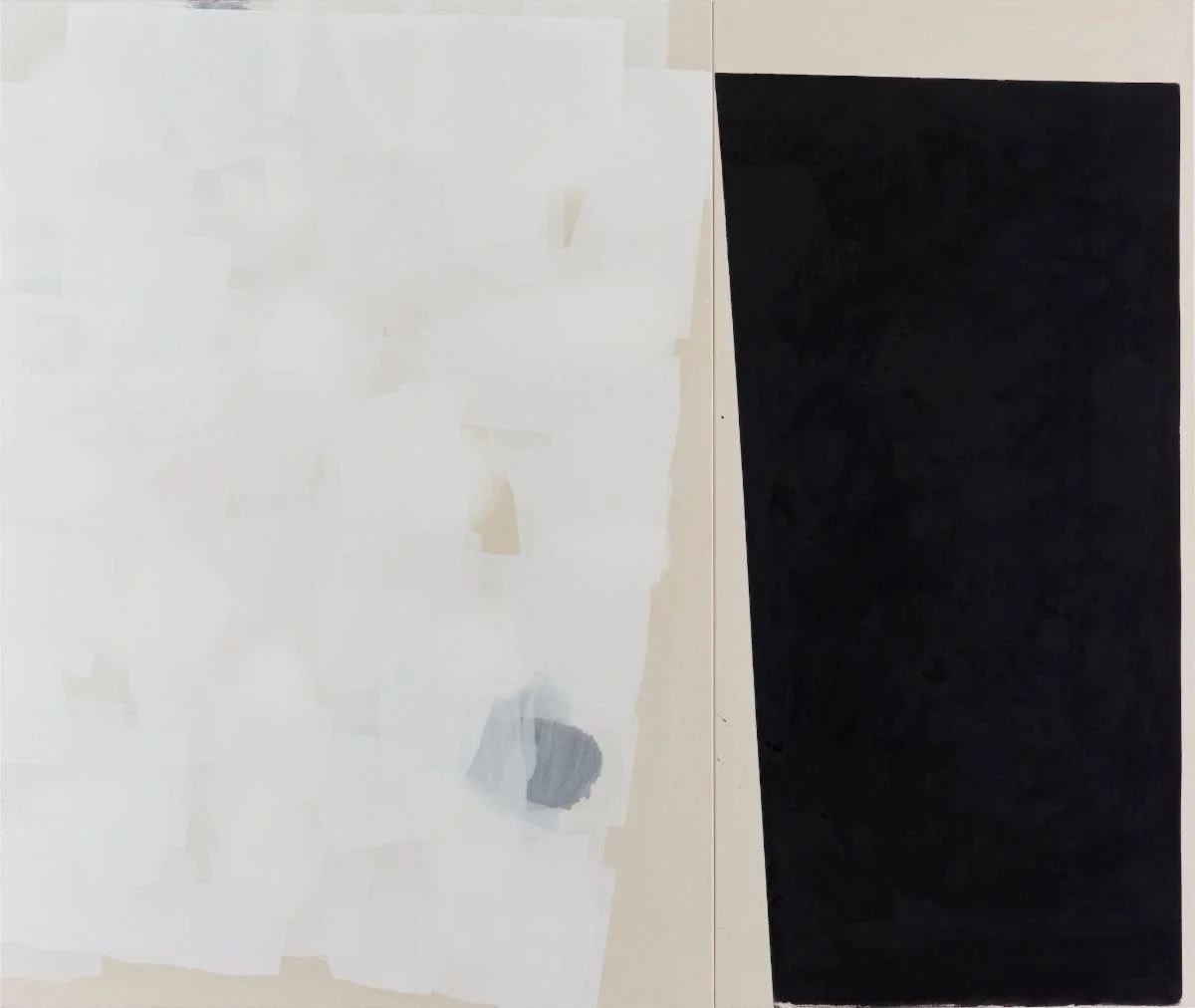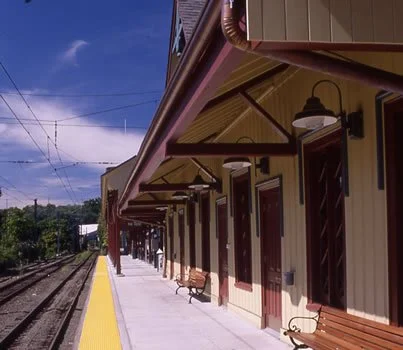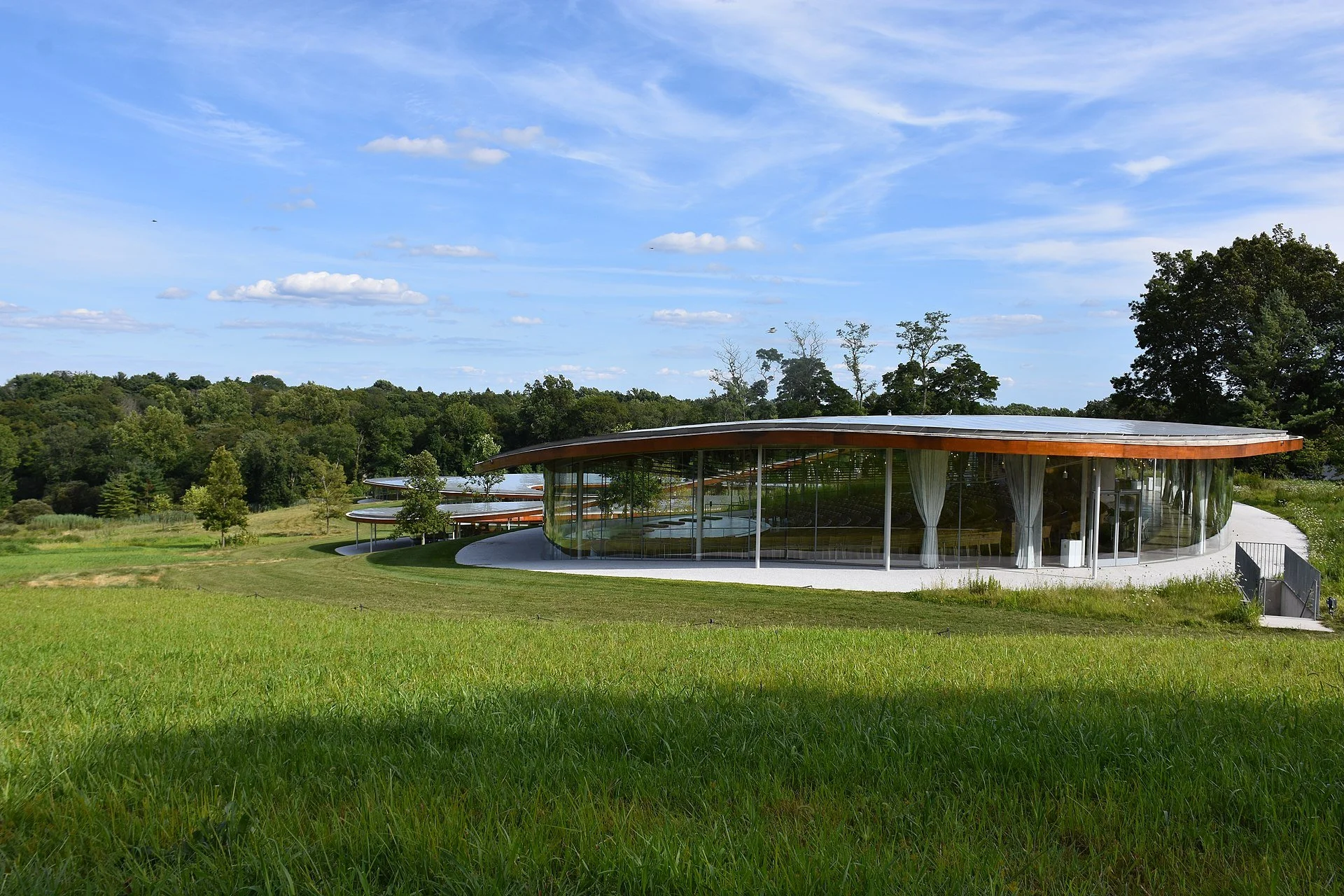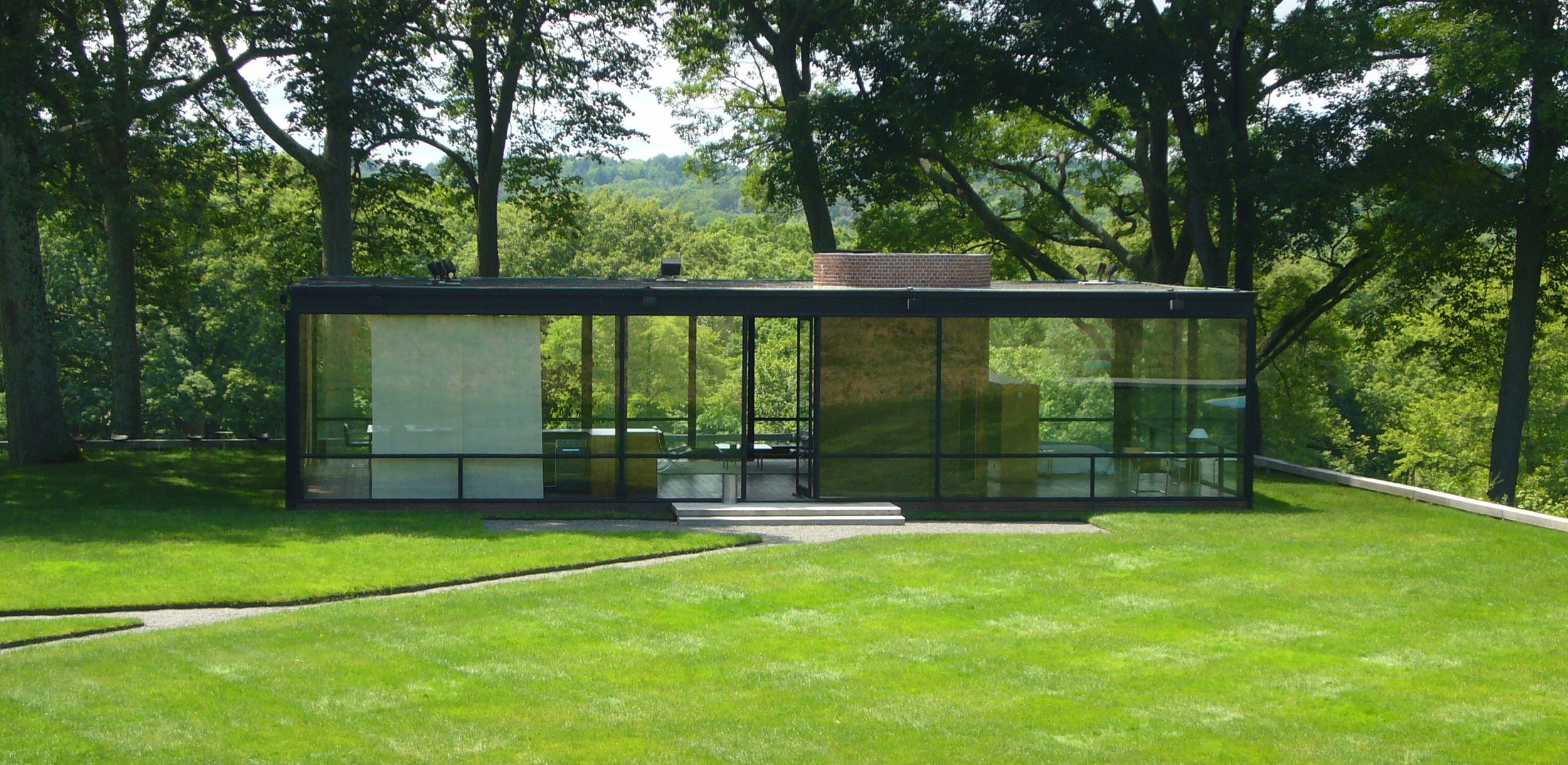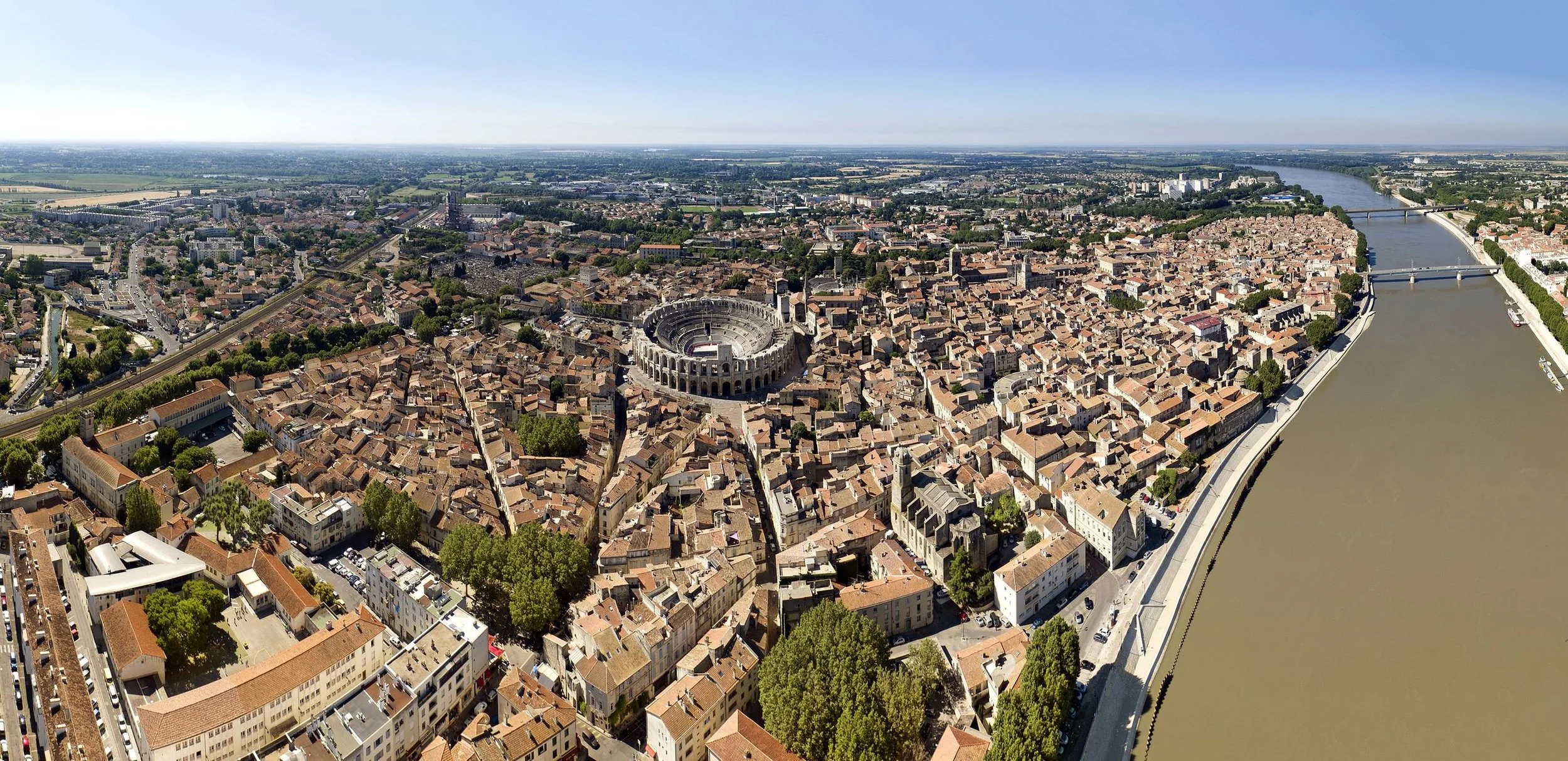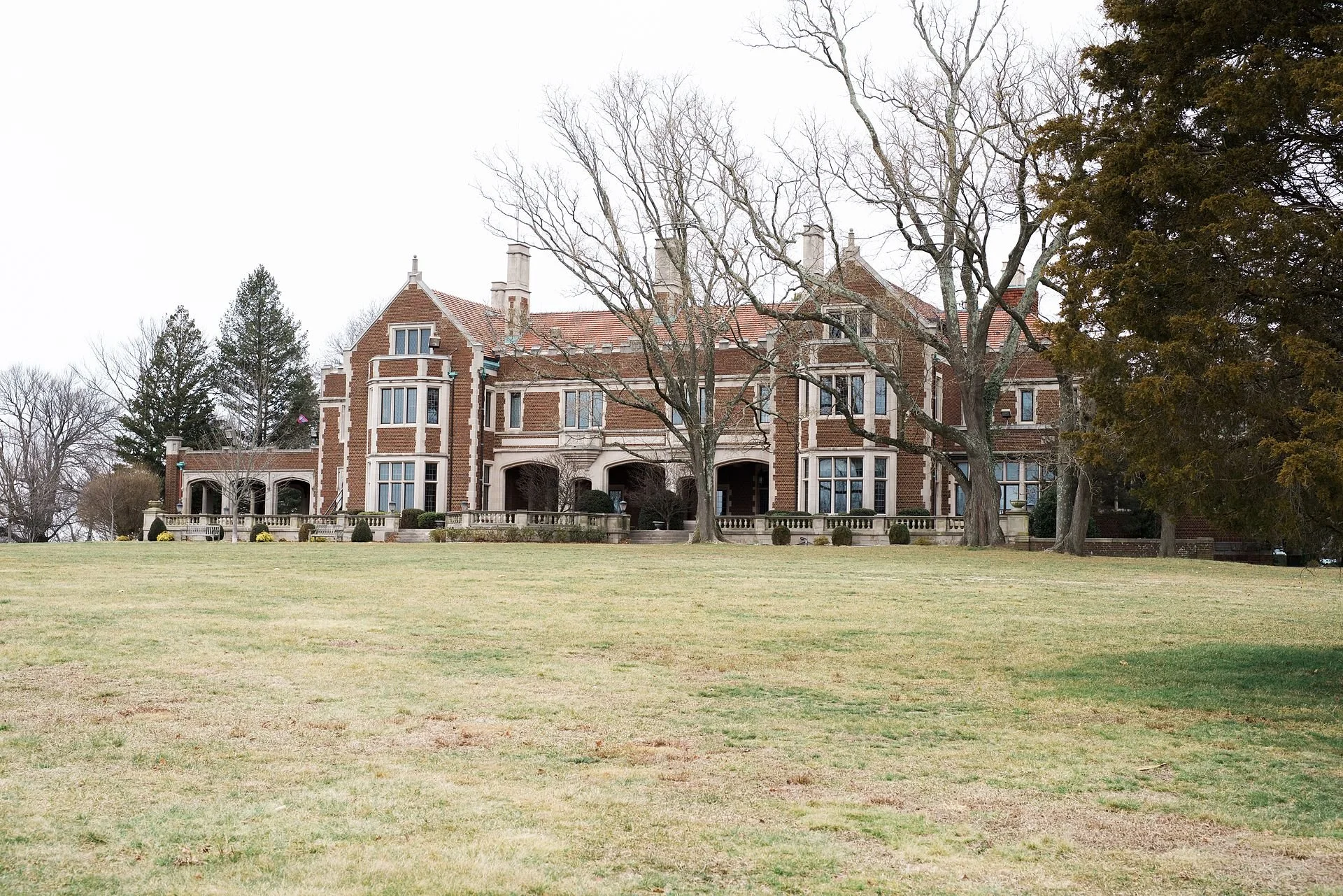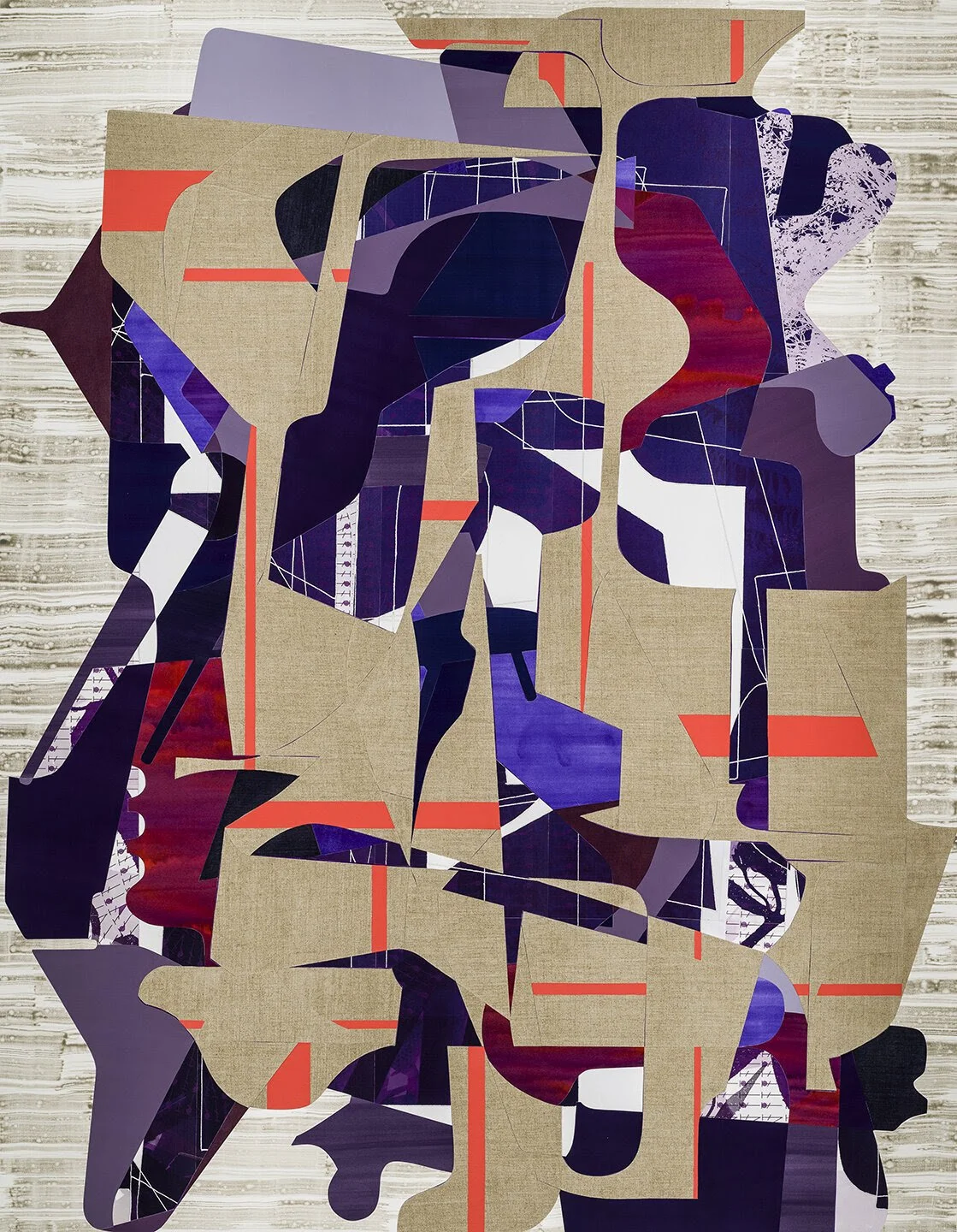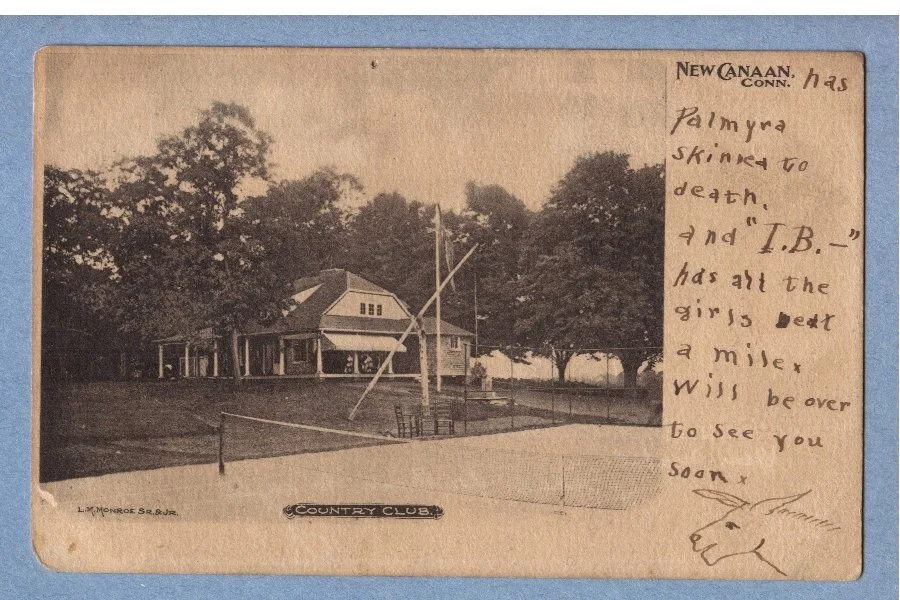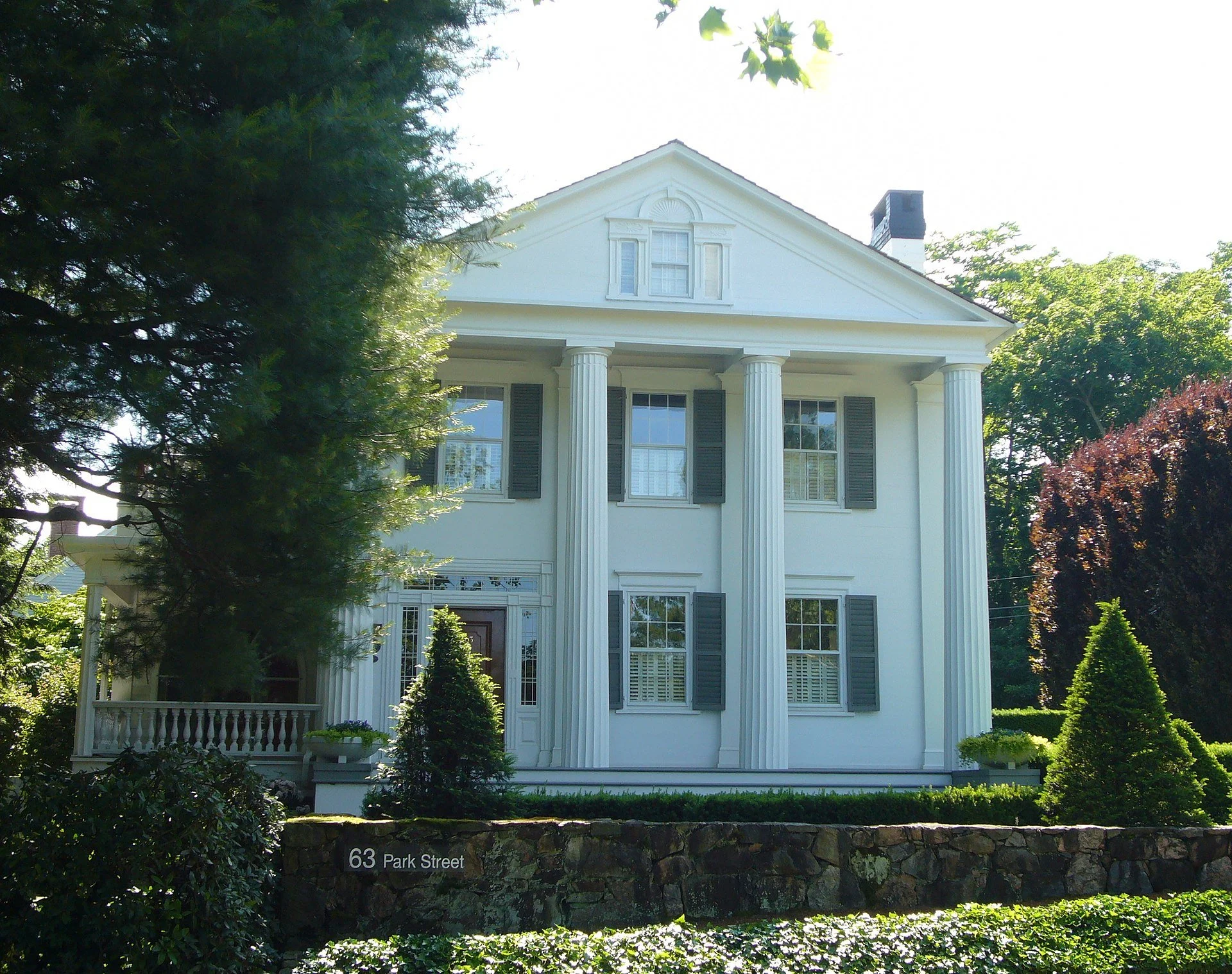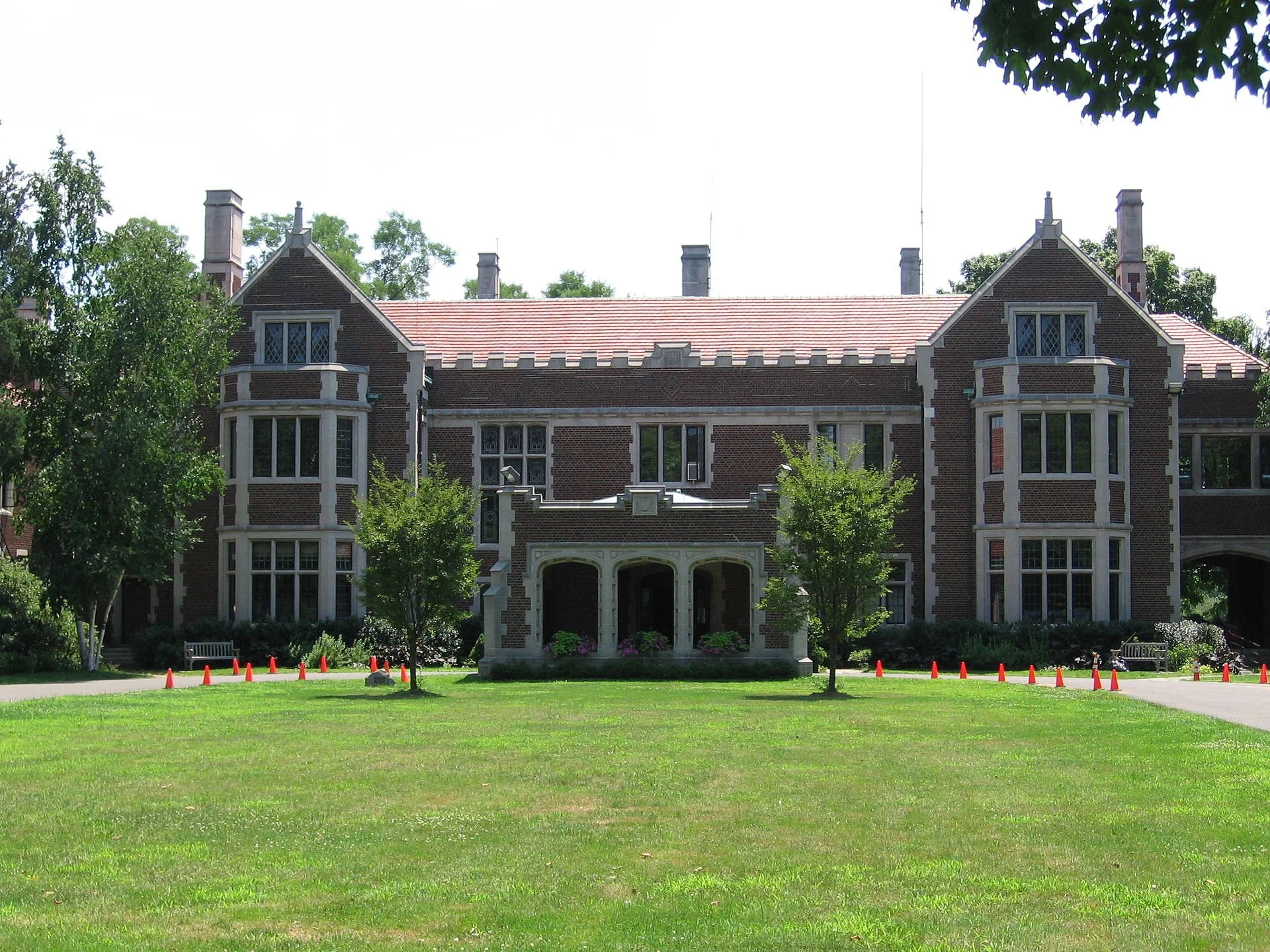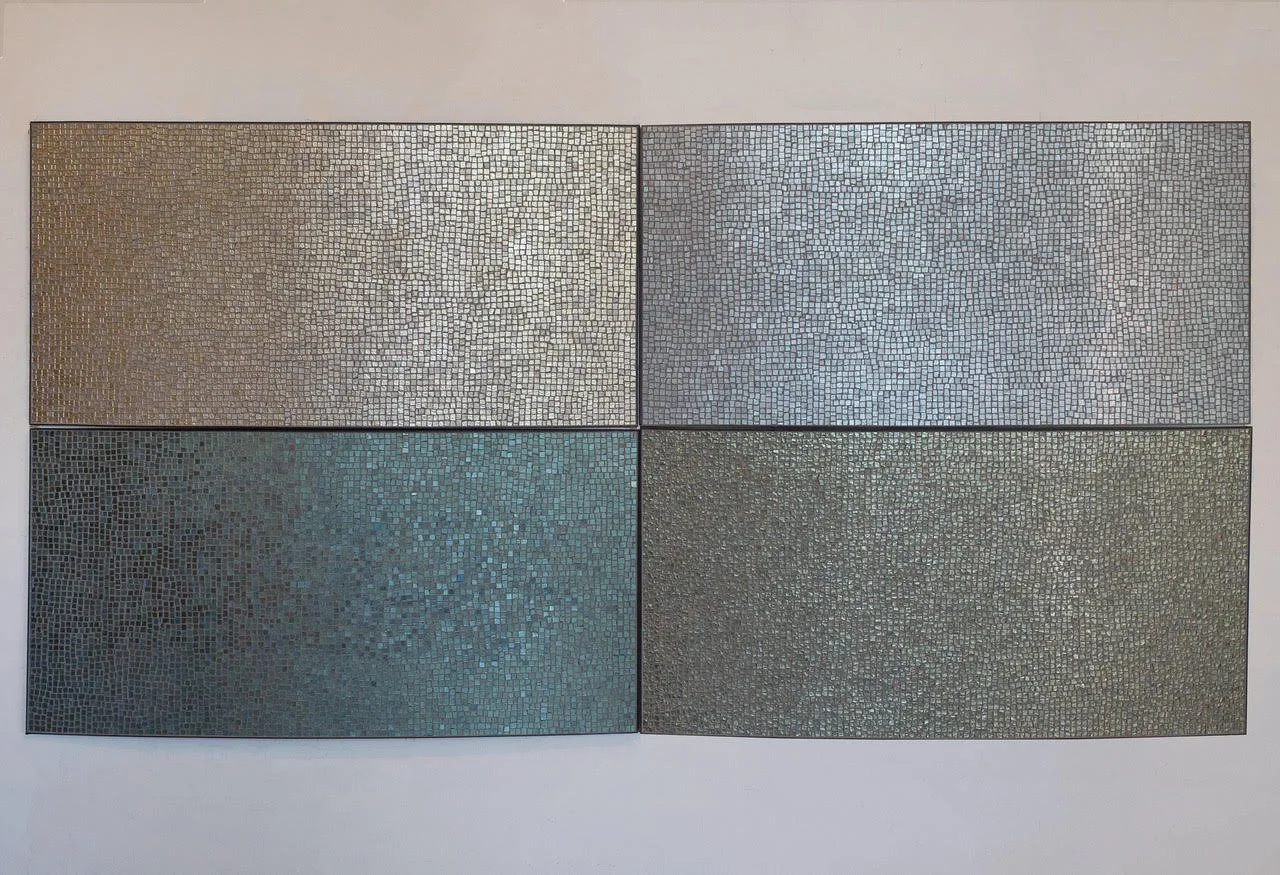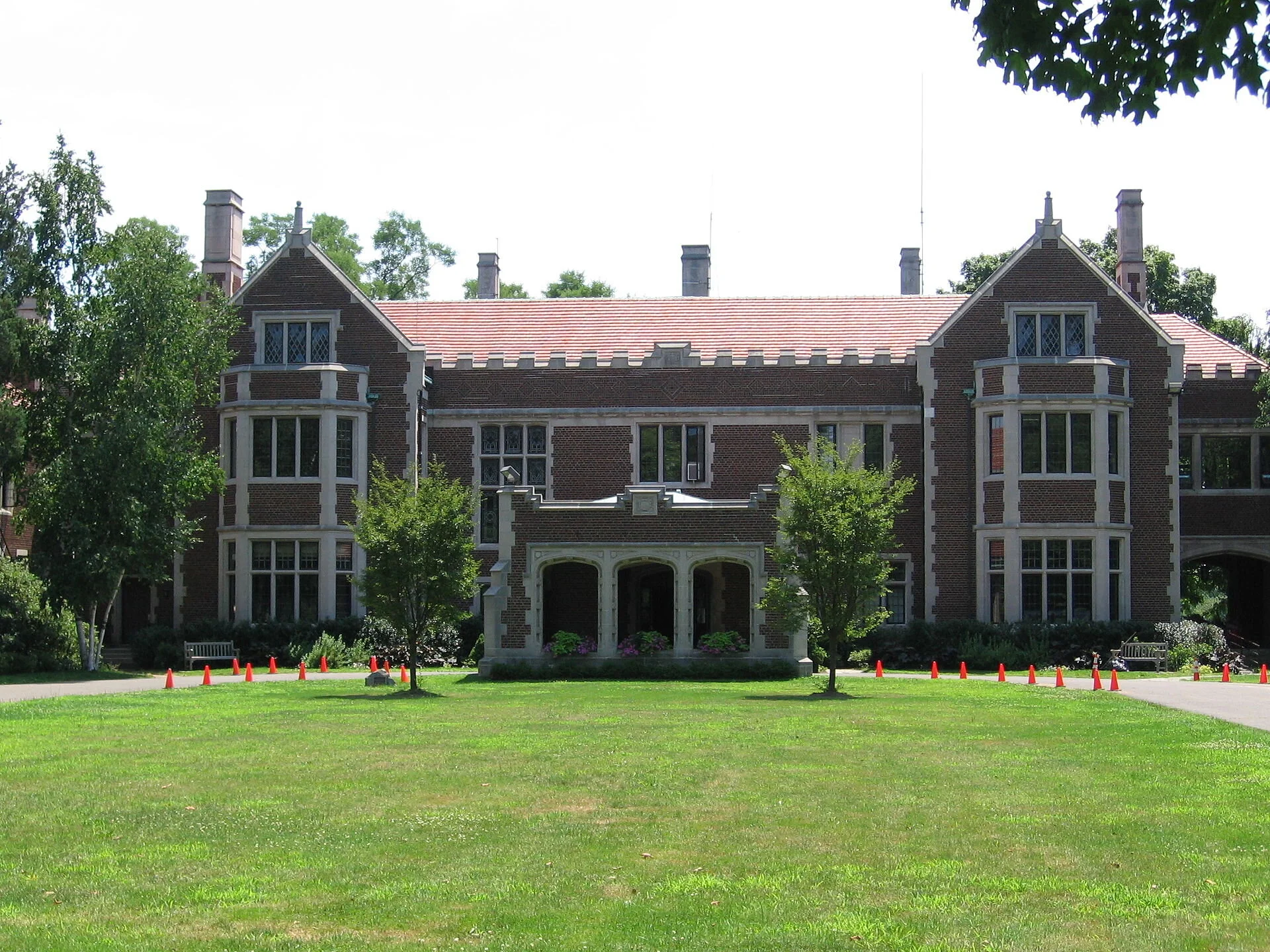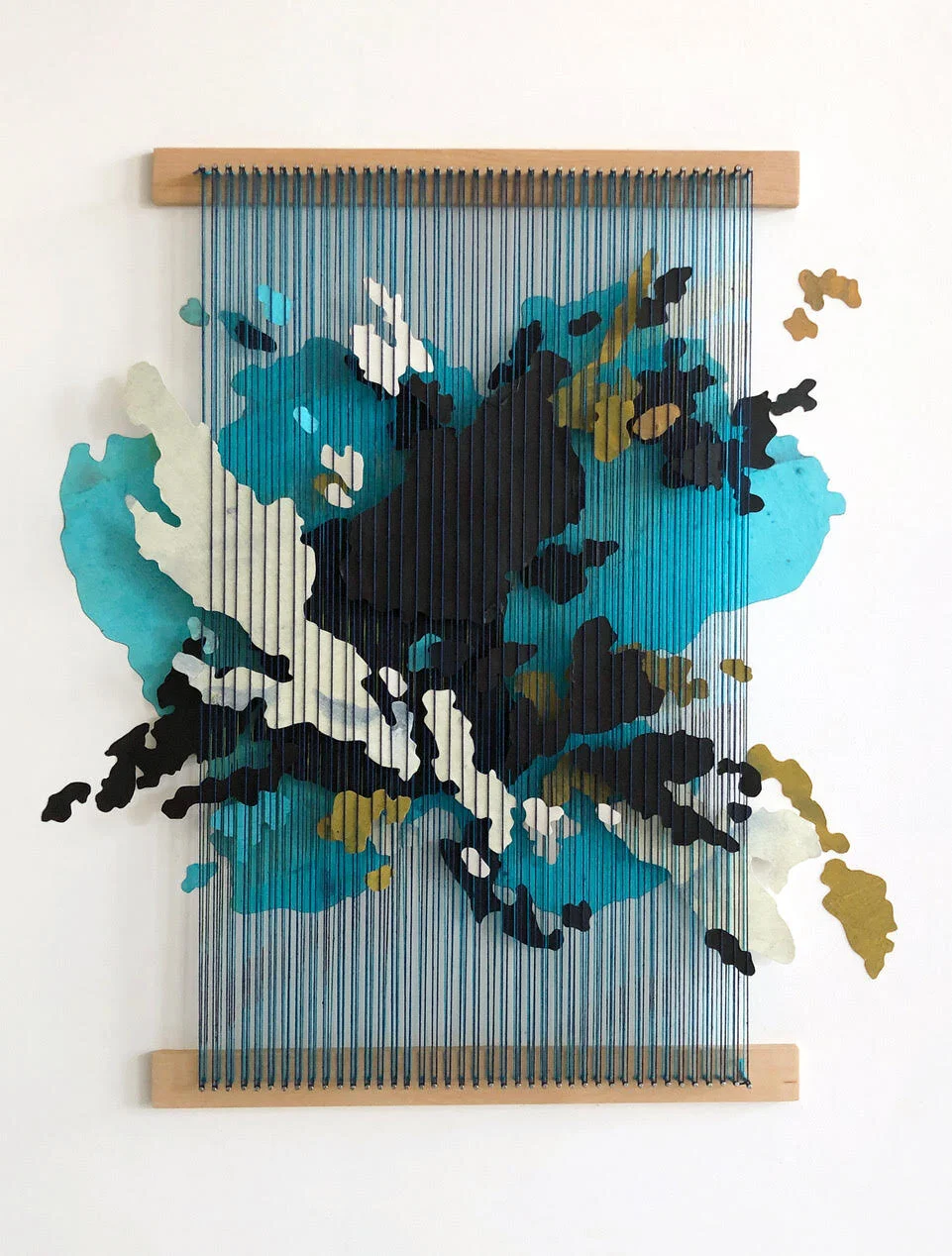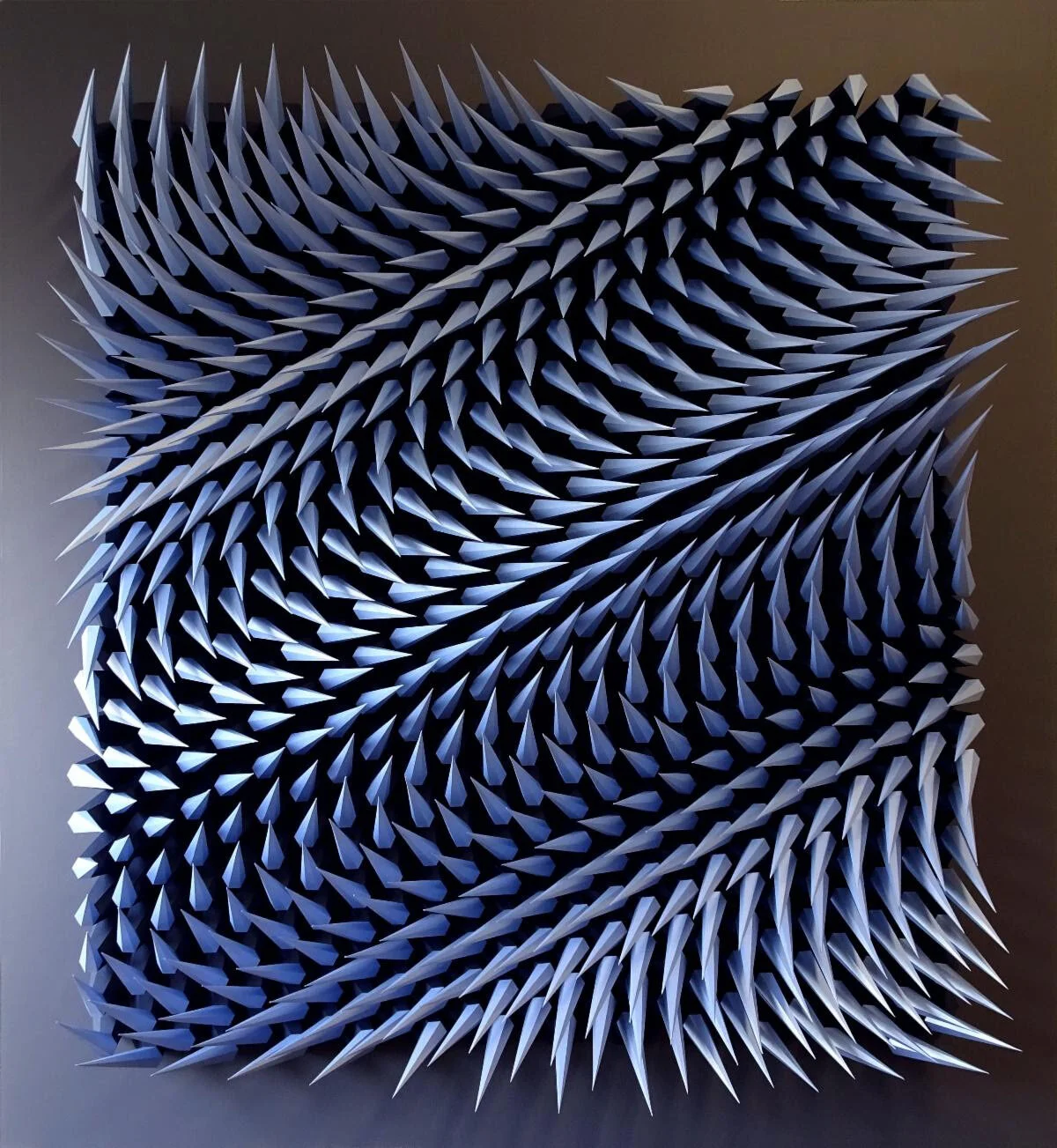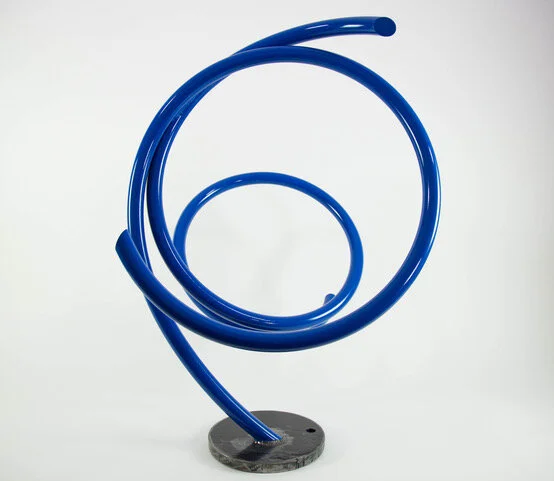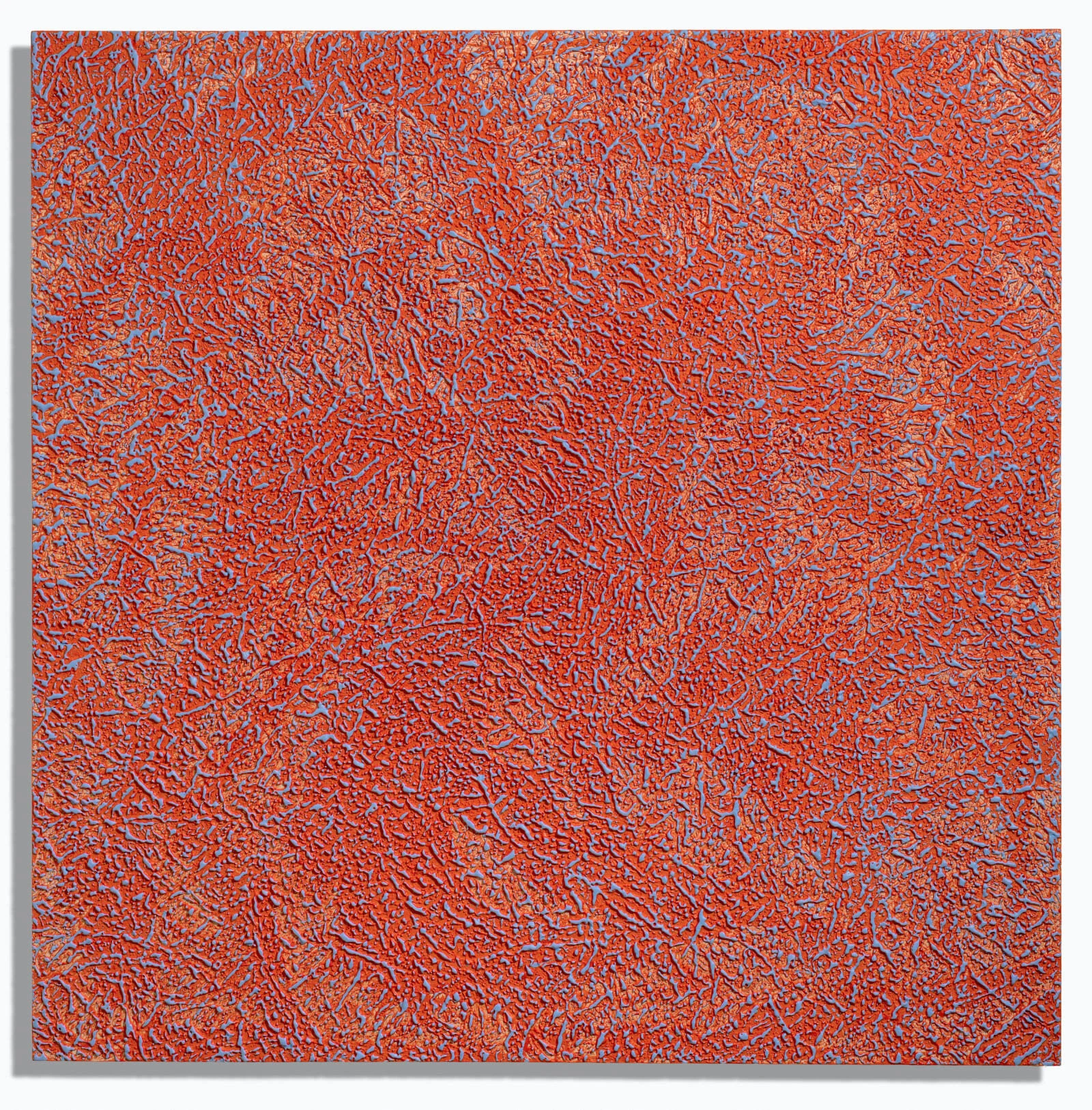
Two Connecticuts
“I lived in a town called New Canaan {Conn.}, which is far too snobby to even mention celebrities. Many American towns are famous for things like ‘See the World’s Largest Ball of String.’ I think my town’s would probably have to be ‘Most Pretentious People.”’
-- Katherine Heigl (born 1978), American actress
Skyline of Norwich, Conn.
“Eastern Connecticut is very different from western.; we’re more liverwurst than pate, more bowling than polo.’’
— Wally Lamb (born 1950), American novelist and native of the old industrial town of Norwich, Conn.
Where physical and visual meet
“Strange Attractor,’’ by Kathleen Kucka, in her show of the same name at Heather Gaudio Fine Art, New Canaan, Conn., through July 22. She lives and works in Falls Village, Conn., and New York City,.
The gallery says:
“Throughout her career, Kucka has pushed the boundaries of traditional painting, experimenting with unconventional techniques to create works that blur the line between two and three-dimensional art. Utilizing a variety of methods including burning or pouring paint, she creates works that focus on materiality and examines the interplay between physical and visual aspects of her chosen medium.’’
The D.M. Hunt Library in Falls Village, part of town town of Canaan in the Berkshires
The thing is to focus on the shimmer
“One Thing’’ (water-based paints and acrylic matte media on stretched canvas), by Renee Khatami, in the big group show “Abstract Visions,’’ at the Silvermine Arts Center, New Canaan, Conn., through April 20.
The name "Silvermine" comes from old legends of a silver mine in the area, although no silver has ever been found. The Silvermine area was long an arts colony.
Silvermine Tavern and mill pond.
On the dots
“Blue Dot 10’’ (oil on canvas), by Mio Yamato, in her show “The Breathing Star,’’ at Heather Gaudio Fine Art, New Canaan, Conn., through April 29.
The gallery says:
“Mio Yamato has gained international attention in recent year for her signature marks -- copious amounts of tiny, pearl-like dots painted with oil or ink on canvases, wooden panels, walls, or large swaths of fabric. These are finely applied and arranged to articulate formations seen in nature, such as mountainous ranges, geological strata, constellations in the sky, and the like.’’
‘Most pretentious people’
Waveny Mansion, in New Canaan.
“I lived in a town called New Canaan, in Connecticut, where they are far too snobby to even mention celebrities. Many American towns are famous for things like, "See the World's Largest Ball of String!" I think my town's would probably have to be ‘Most Pretentious People.’’’
— Katherine Heigl (born 1978), actress
Henge fun and Grace Farms
“Henge XII” (acrylic and oil on canvas; diptych), in Ian McKeever’s show “Henge Paintings,’’ at Heather Gaudio Fine Art, New Canaan, Conn., through Dec. 3
The gallery says:
“McKeever’s five-decade artistic career has been an ongoing exploration of abstraction through the use of oils and acrylics on canvas or paper. He typically creates works in groups, undertaking several canvases at a time which can take him two or three years to complete.’’
A lonely scene at New Canaan’s train station. It recalls the melancholy that pervades the TV series Mad Men, which mostly takes place in Manhattan and New York’s affluent suburbs in the late ‘50s and early ‘60s.
At Grace Farms, in New Canaan, an 80-acre cultural center. Grace Farms is owned and operated by the Grace Farms Foundation, a not-for-profit organization whose mission is to promote peace through nature, arts, justice, community, faith, and Design for Freedom, a new movement to remove forced labor from the built environment.
— Photo by Karl Thomas Moore
The River building at Grace Farms sits amongst meadows and woodlands in New Canaan.
— Photo by Adam.thatcher
‘Celebration of irregularities’
“Resilience” (porcelain, wire on panel), by Lucas Ferreira, in the show “Ferreira & Nascimento: Natural Terrains,’’ at Heather Gaudio Fine Art, New Canaan, Conn., Aug. 27-Oct 8.
The gallery explains:
“This is the first exhibition for Lucas Ferreira in the United States. Born and raised in Brazil, Ferreira’s success as an artist came about serendipitously when he moved to London in his early twenties to study cinema. He began working in ceramic as a means to support his film projects in what he dubs is ‘a capricious industry.’ As he explored the properties of porcelain ceramic and developed his own techniques and language, Ferreira found the demand for his work exceeding his wildest expectations.
“For Ferreira, his work is a ‘celebration of irregularities’ that begins with small, simple shapes which are then repeated thousands of times. Ferreira works with porcelain ceramic in its purest form, rolling the material out into paper thin sheets and allowing it to dry for about an hour. This prevents the porcelain from sticking to the tools he utilizes to cut the individual shapes. Each piece is meticulously hand-cut and allowed to dry further before being fired in a high-powered kiln. As the tiles are assembled together in an organized fashion, the hand-made becomes more evident. Rather than getting uniformly lost in the grouping, the individual character of each piece is accentuated adding dimension to the overall textured surface. Color, derived from natural minerals, also plays a part in his work, as the pieces can go from lighter to darker values, or make a statement of form and perspective against neutral backgrounds. Ferreira’s process develops organically, the composition and rhythm dictated by spontaneous thoughts and feelings of the moment. The results are landscape tessellations, fragmented shapes that are visual feasts made timeless with the use of ancient mosaic techniques. Ferreira also credits as influence the work of Sérgio de Camargo, the Brazilian sculptor and relief maker who became an important figure in the Latin American Constructivist movement. Ferreira’s work has been the subject of many exhibitions in Europe and is in numerous private and corporate collections. His mosaic compositions are also in high demand for site-specific commissions. Ferreira currently lives and works in London.
“On view alongside Ferreira’s mosaics will be new work by gallery roster artist Valéria Nascimento. Her artistic practice shares certain aspects with Ferreira in that she too makes the porcelain material paper thin before hand-cutting each piece individually. As with Ferreira, the porcelain is left in its natural, unglazed finish, and only colored with oxides or minerals. The similarities end there, however, for her shapes are directly inspired by nature and take on the forms of stunning botanical or aquatic installations. Flora, blooms, hibiscus, bamboo, branches, or coral, anemones, and the like grace the spaces they inhabit. Nascimento’s architectural background informs her intricate and detailed presentation, and her work is about bringing nature indoors. The exhibition will feature a site-specific wall-mounted “meadow” installation as well as other work new to American audiences. Also included are works the two artists collaborated on, combining their distinctive aesthetics into three separate panels. Nascimento has had a prolific career and has been extensively exhibited and written about. Her work is in multiple private and public locations throughout the world.’'
The Glass House is a historic house museum on Ponus Ridge Road in New Canaan, built in 1948–49. It was designed by architect Philip Johnson (1906-2005) as his own residence.
Don Pesci: In Arles: ‘We will take you’ to our ‘Gold Coast’
Aerial view of Arles. Note the Roman arena.
— Photo by Chensiyuan
VERNON, Conn.
Whenever French President Emmanuel Jean-Michel Frédéric Macron comes to mind, more often than I would wish, my remembrance floats back to a conversation we had with François, a boat owner in Arles more French than the Eiffel Tower and more emblematic of France than Macron.
François’s boat was parked on the Rhone just below our larger boat. My wife Andrée and I were leaning over the rail, about to descend on Arles, when he called up to us in communicable English.
“Where are you from? You are American.”
“Connecticut. This is my wife, Andrée.”
“Ah, French!”
“Her father was from Trois-Rivières, Quebec. She has Indian blood in her. The French and the Indians were on amicable terms, you may recall.”
“Yes.”
He would have said “yes” in any case, because he was in the process of selling his boat.
“Americans are rich, eh?”
“Not us,” my wife responded in French. “We’ve escaped that torture.”
François laughed, a hearty boatman’s laugh, no guile in it at all.
“You should come down here. I’d like to sell my boat to you.”
We declined the offer, but joined him on the dock where his boat was berthed. He brought us some wine and cheese from his boat.
“In Connecticut,” Andrée said, once again in French, “you are right to suspect that all the roads are paved with gold, especially in Fairfield County, where I was born and raised. This is the ‘Gold Coast’ of Connecticut, but we have no gold in our pockets to buy your beautiful boat.”
The boatman’s eyes glowed. Here was a woman who understood him.
“I will show you Arles.”
And he did.
When we left him, Andrée said to François, “You have been so kind to us. If ever you come to Connecticut, you must find us.” She gave him our address. “And when you come, we will take you to Fairfield {County}, where there are many rich people and many yachts. The people there would be interested in buying your beautiful boat.”
The three of us knew that we would never see each other again. Some kindnesses must remain unpaid. He lifted her slim fingers to his lips and we said our farewell to Arles.
Later that night, bunking in our own boat, traveling south on the Rhone through Provence to Nice, Andrée said, “I can still smell the wine of the region on my hand.”
Don Pesci is a Vernon-based columnist.
Waveny Mansion, in New Canaan, in the “Gold Coast’’ of Fairfield County, Conn.
— Photo by Karl Thomas Moore
‘Between permanent and ephemeral’
“Cautionary Configuration” (paint, painted paper, print material and linen, collaged/adhered to panel), by Aaron Wexler, in his show “Everywhere You Go Is a Shape,’’ at Heather Gaudio Fine Art Projects, New Canaan, Conn., June 4-July 23.
The gallery says:
“Wexler uses sourced materials ranging from photographs, printed imagery, illustrations, and his own drawings to create intricately collaged panels and works on paper. Each element is carefully layered and woven into a graphic framework of color, form, and varying textures. Shapes and lines reveal and conceal themselves as they navigate and compete for space on the surface.
In addition to the optical network of color and forms, Wexler plays with texture and weight through the use of different materials. Pieces of coarse and raw canvas are juxtaposed with thinly painted, more transparent Japanese paper, suggesting a push and pull between the permanent and the ephemeral.’’
New Canaan Country Club circa 1906. Since the early 20th Century New Canaan has been an affluent New York City suburb.
The famed editor Maxwell Perkins (1884-1947) praised New Canaan, where he lived from 1924 to his death:
“{T}he charm of New Canaan, a New England village at the end of a single track railroad with almost wild country in three directions, i.e. wild to the Easterner. An ideal way for bringing up children in the way they should go, girls anyhow.”
Moffly Media noted in 2009:
“Max Perkins, who died sixty-two years ago this June, was the most important American literary figure that you may never have heard of. He wrote no books of his own; his daughters insisted he couldn’t spell or punctuate; and his rivals thought him unsophisticated. Yet as a book editor for Charles Scribner’s Sons, where he worked from 1914 until his death in 1947, he possessed a matchless internal compass about writers and writing, shepherding into print the great works of F. Scott Fitzgerald, Ernest Hemingway, Thomas Wolfe, Edmund Wilson, Ring Lardner and Marjorie Kinnan Rawlings.’’
The Maxwell E. Perkins House, in New Canaan.
— Photo by Staib
‘Shapes of mind’
“The Layers of Clouds in Night,’’ by Hyun Jung Ahn, in her show “Rendezvous,’’ at Heather Gaudio Fine Art, New Canaan, Conn., April 2-May 7.
The gallery says:
“Born and raised in South Korea, Ahn is a multidisciplinary artist who moved to New York City in 2015 in pursuit of her second M.F.A. Her work investigates abstraction through enigmatic forms she terms ‘shapes of mind’. The cultural differences and language barriers she experienced when she moved to the United States forced Ahn to ‘quiet her mind’, as she states. Her work evolved from the figurative and representational to a reduced abstraction that economized and purified her expression. The result was a new visual language that became more hermetic and enigmatic in color and form. Although today she is mostly Brooklyn-based, she continues to straddle both cultures by maintaining a studio and teaching position in Seoul.’’
Waveny mansion in Waveny Park, in New Canaan.
Beyond carpentry
From the series "Everyday Museum” (wood rulers mounted on a wood board), by Eduardo Terrazas, in the show “Re-inventing the Every-day,’’ at Heather Gaudio Fine Art, New Canaan, Conn.
It features works by Gabriel de la Mora, Martín Soto Climent and Mr. Terrazas.
The gallery says:
“The artists in the exhibition celebrate the aestheticization of ordinary objects through a diverse set of interrogational approaches. They are concerned with a non-hierarchical discourse and formal aspects of art-making, selecting ready-made or discarded materials as metaphors for cultural commentary. Theirs is a meticulous, processed-based approach that seeks to balance the rival goals of formalism and conceptualism.’’
We need all the light we can get
“Untitled Mosaic” (glass, concrete and steel), by Ann Gardner, in her show “Expanding the Perception of Light’’, at Heather Gaudio Fine Art, New Canaan, Conn., Nov. 20 through Jan. 8
The gallery says:
“Gardner’s artistic practice stems from a life-long exploration of light, color, pattern, and volume. Using one of the most ancient man-made materials, glass, her sculptures are presented in a range of formats, shapes, and scales. Gardner hand-cuts colored glass into tiny mosaic pieces and reassembles them onto steel armature structures. These come in a variety of forms, such as curved geometric shapes, tubular ovals, waved panels, star bursts or round compositions created in a series. Their volumes protrude into space and recede into themselves, thereby allowing for additional flickering of light, color, and reflection to take place. Some of the sculptures are mounted onto walls while others are free-standing or suspended from the ceiling.’’
One of many significant buildings in New Canaan: This Greek Revival house , built in 1836, was added to the National Register of Historic Places in 2004. The house was home to Maxwell E. Perkins (1884-1947), the legendary editor, early promoter and friend of Ernest Hemingway, F. Scott Fitzgerald Thomas Wolfe and some other famous 20th Century authors.
In 2019 the house was acquired by the New Canaan-based Onera Foundation, with the plan to convert the house into an architectural museum and exhibit space.
Don’t kick it
“Harrow 2” (iron), by Tom Waldron, in “Compelling Structure,’’ a joint show with Patrik Grijalvo, at Heather Gaudio Fine Art, New Canaan, Conn., through Nov. 13.
The Waveny estate in New Canaan, now a town park. The park's centerpiece is this “castle," built in 1912 by Lewis Lapham, a founder of the oil company Texaco, as mostly a summer place. It’s surrounded by 300 acres of fields, ponds and trails.
Memory and geography
“At the Beginning” (cardboard, hand-cut world map), by Vivianne Rombaldi Seppey, in the group show “A Sense of Place,’’ at Heather Gaudio Fine Art, New Canaan, Conn., through Sept. 29. The show features new works by Tegan Brozyna Roberts, Simona Prives and Viviane Rombaldi Seppey.
The gallery says:
“Memory, geography and cultural experiences are underlying themes explored by these three women artists. Through an innovative use of paper, maps, threads, printmaking, collage and projected imagery, the artists in the show create two and three-dimensional objects that express universal notions of belonging and association.’’
Moreno Clock on Elm Street where it meets with South Avenue in New Canaan.
But no maps to get there
“Doldrum III” (painted paper, thread and wood nails on wood panel), by Tegan Brozna Roberts, in the group show “Sense of Place’’ at Heather Gaudio Fine Art, New Canaan, Conn. opening Aug. 14.
The gallery says:
“Memory, geography and cultural experiences are underlying themes explored by these women artists. Through an innovative use of paper, maps, threads, collage and video projections, the artists create two and three dimensional objects that express universal notions of belonging and association.’
It only looks painful
“Unholy 75” (paper), by Matthew Shlian, in his show “Matthew Shlian: Light Years,’’ at Heather Gaudio Fine Art, New Canaan, Conn., June 26-Aug. 7.
The gallery says:
“Shlian’s work straddles the world of paper engineering and the fine arts, a place where two-dimensional paper becomes intricately sculpted into precise and stunning three-dimensional forms. His work is rooted in printed media, book arts and commercial design, where paper gets folded, tessellated, compressed and arranged in unexpected ways. Modular aggregation and the way in which shapes repeat, morph and reconnect with each other have been the artist’s preoccupation for the past several years. Adopting an intuitive approach, Shlian begins with hand-drawn patterns in a notebook and then uses digital mapping on an industrial plotter to work out his ideas. His curiosity with the process continues when he returns to working with paper using his hands, constructing forms out of the everyday material. Color, light, patterns and planar shifts come together in geometric assemblages that reveal themselves as he works. An important part of the artist’s process is the element of surprise: if he can completely visualize a final result, he doesn’t have a reason to create it. Shlian has to start his work and make changes along the way in order to fully understand it. In the same way, the titles of his works, intriguing and serendipitous to be sure, are related to phrases, conversations or musings he has had with his daughters and others.’’==
The late architect Philip Johnson’s famous “Glass House,’’ in New Canaan. It’s now a museum.
For an NRA meeting
“Still from 'Hand Catching Lead'‘ (two-color lithograph/screenprint), by Richard Serrra, in his show “Richard Serra: Selected Prints,’’ at Heather Gaudio Fine Art, New Canaan, Conn., starting May 8.
The gallery says:
“In collaboration with master printers Gemini G.E.L., the exhibition will include monochromatic works from different series executed in the last 15 years. Serra’s explorations with printmaking have been an extension of the artist’s practice of working in monumentally-scaled sculpture. Since 1972, he has been working with Gemini to create and invent new techniques in the medium, leading to a varied output of complexly surfaced prints.’’
'Implied movement'
“Pacific” (steel pipe and high-performance car paint), by John Clement, in his joint show with Robert Sagerman, “Sagerman and Clement: High-Performance Color,’’ at Heather Gaudio Fine Art, New Canaan, Conn., March 13-May 1.
Mr. Clement’s site explains that his work “juxtaposes a variety of playing steel coils and arcs that, layered on top of one another, take on a life of their own. While today Clement focuses primarily on large-scale outdoor work …. his smaller works are, on their own volition, about to swivel about on their bases and spin about in space. Clement’s dynamic and dramatic union of form, line and negative space emphasizes the impression of implied movement.’’
“The Glass House,’’ in New Canaan (built in 1948-1949), designed by Modernist architect Philip Johnson (1906-2005) as his own residence. It’s now a National Historic Site.
Better have that rash looked at
Encaustic painting from Martin Kline’s show “Allover,’’ at Heather Gaudio Fine Art, New Canaan, Conn., Jan. 23-March 6.
The gallery says:
“Throughout the course of his career, Kline has examined systems of historicism and presentation, his focused and disciplined approach creating bodies of works in series, each with their distinctive visual language. Among his many investigations, Kline has looked to notions of authenticity, sincerity and originality, and, as he states, there comes a point when an artist ‘cannot escape Jackson Pollock’ For this exhibition, Kline presents his newest group of paintings entitled “Allover,’ inspired by the drip technique he used in “Dream of Pollock’’ (for Kirk Varnedoe) back in 2007.
The multi-colored “Allover’’ series consists of, for the most part, strictly monochromatic abstractions. Created in a looser, automatist fashion, these paintings have a more fluid sensibility, with random thread-like rivulets of pigment networked in and out of broader, purposeful bands of color. Unlike previous series, these paintings lack compositional focal points, nor do they possess narrative characteristics seen in his Hammocks assemblages. The viewer’s eye is free to wander all over and engage with the painted surface indiscriminately.
”While Kline may be revisiting the spontaneous technique for which Pollock became famous, the approach to painting with the panel positioned horizontally has been very much decidedly his own from early on. Kline has mostly worked on his surfaces laid horizontally, typically on a tabletop—his signature additive approach to painting requiring the pull of gravity to fasten the pigments in situ while drying. For the most part, Kline’s hand has had a direct touch through the use of a paintbrush on the paper, panel or canvas. In the Allover paintings, Kline is still working horizontally but he has severed the traditional anatomical connection, distancing himself from the surface even more by placing the panels on the floor. This increased space relinquishes control for the drips and pours to act more randomly and allow for elements of surprise to occur. Most of the panels in this series lack confining frames and the sides are free of splashed pigments that reveal the process. The resulting suggestion is that the drips and thicker gestures of color travel beyond the picture plane. It is as if the viewer is getting a snapshot, a window into elements that exist outside the painting’s boundaries.’’
Fine folding
Work by Peter Monaghan in his show “Peter Monaghan: Fold,’’ at Heather Gaudio Fine Art, New Canaan, Conn., Nov. 21-Jan. 9. He uses his folds as sculptures to evoke emotion and energy through color. Not surprisingly, he’s a former graphic designer.
The Moreno Clock, on Elm Street in New Canaan.
— Photo by Jasonacurry
1836 view by John Warner Barber
